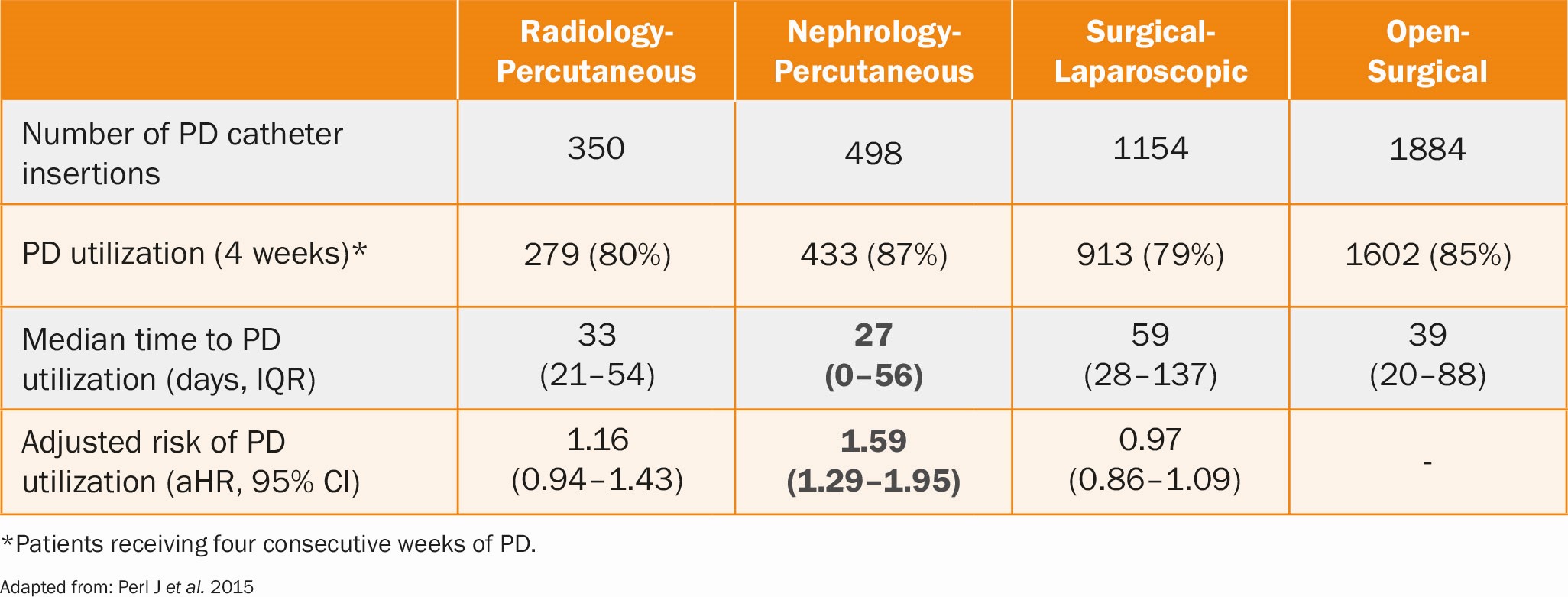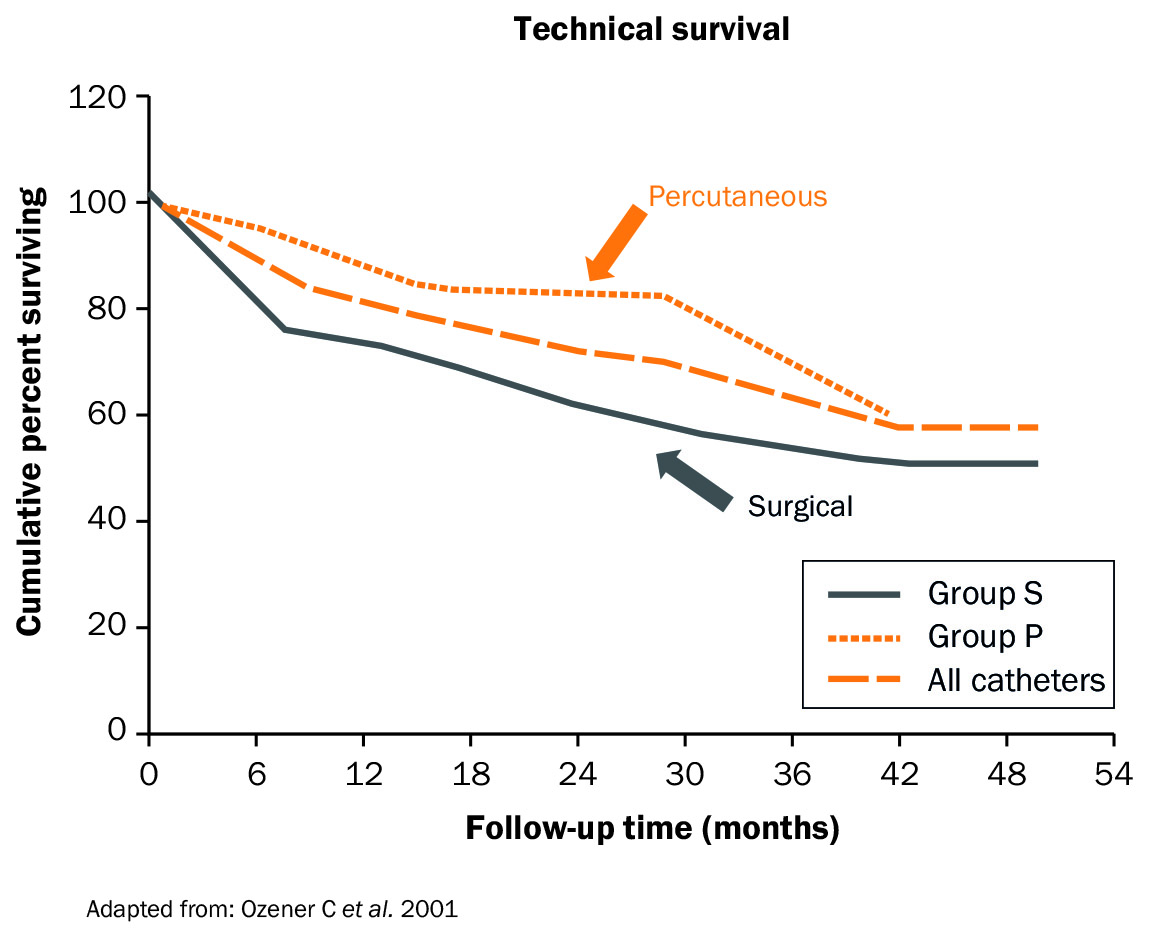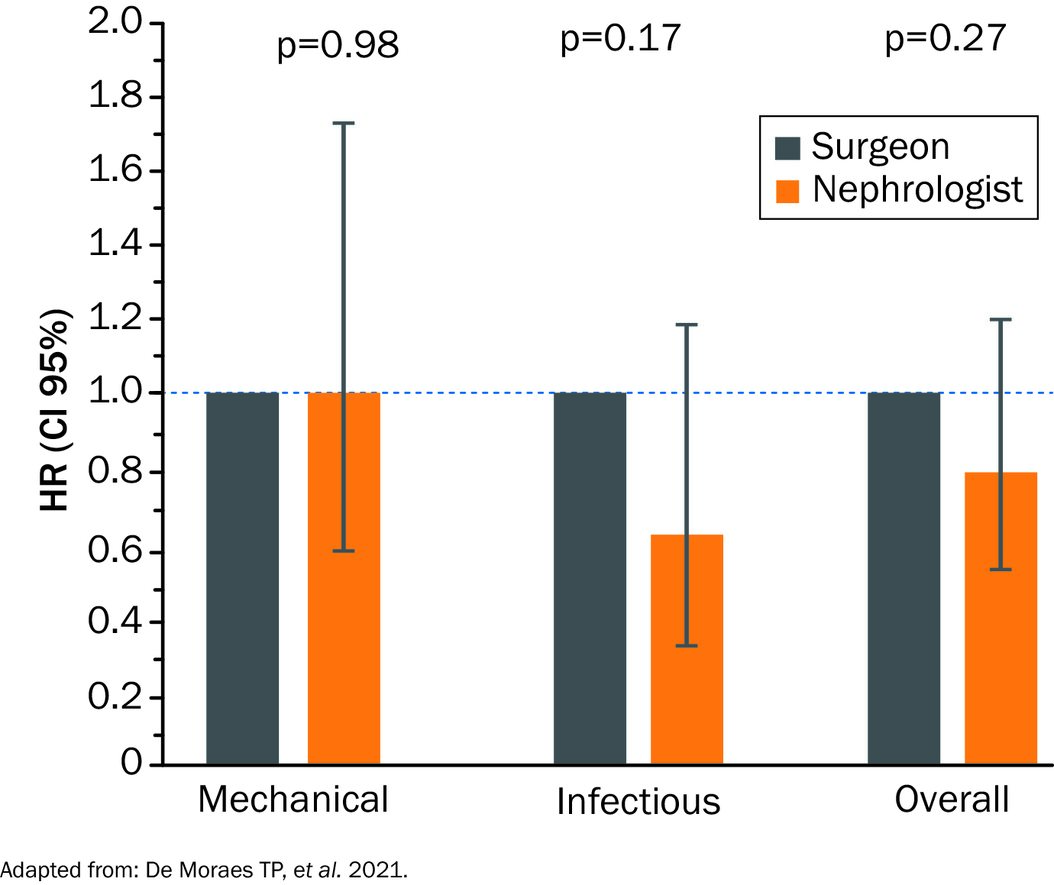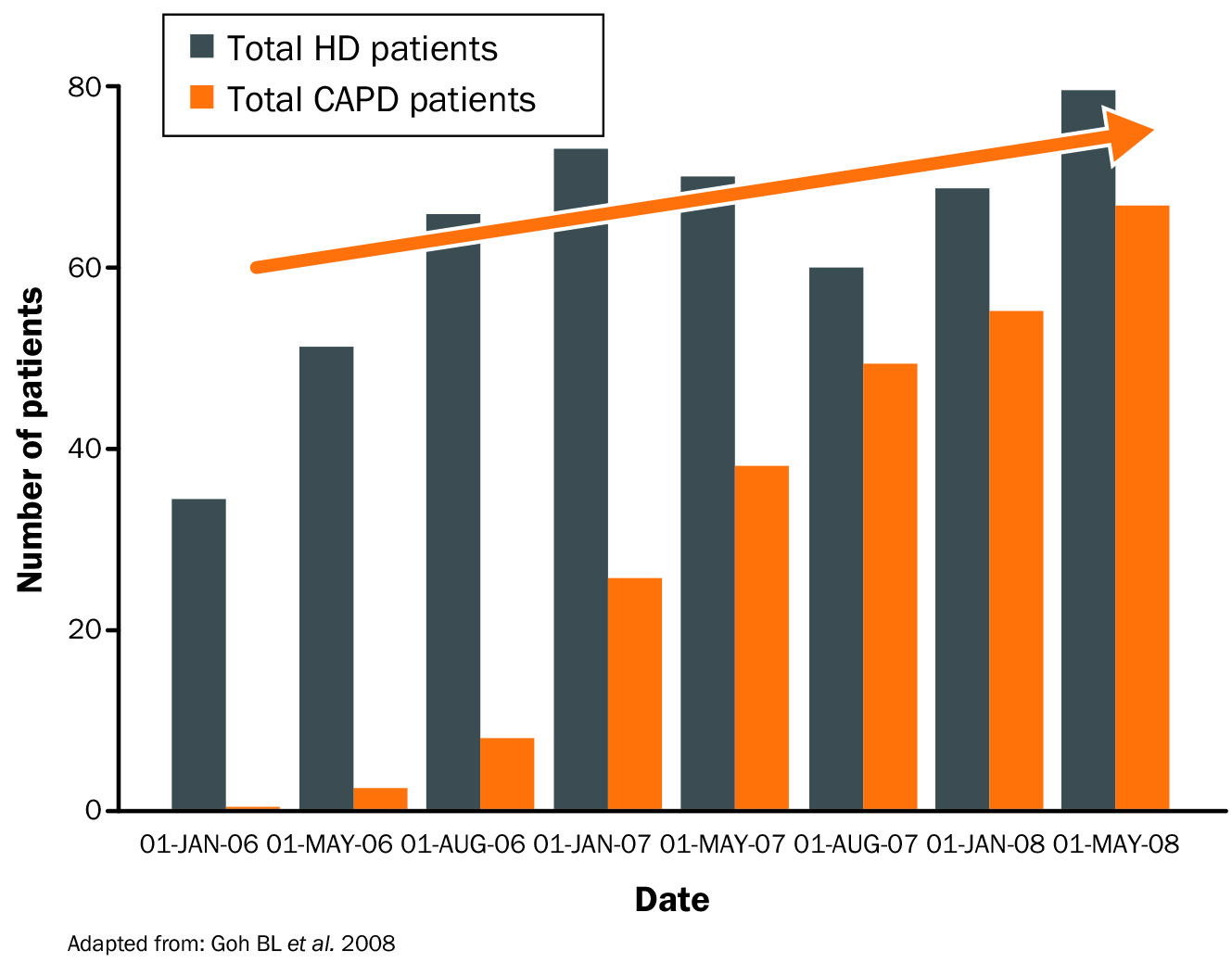Series 3

Series 1
Peritoneal Dialysis Catheter Insertion is an Essential Medical Service for Kidney Failure Patients in COVID-19 Pandemic

Series 2
A Safe Technique With Outcomes Shown to be Equivalent to—or Even Better Than—Surgically Placed Peritoneal Dialysis Catheters

Series 3
Nephrologist-Inserted Catheter Demonstrated a Higher Peritoneal Dialysis Utilization Rate and a Shorter Rate of Initiation with Lesser Complications

Series 4
Minimally Invasive Approach Technique and Reduced Dependence on Resources in Operating Theaters
A nephrologist-inserted catheter is an antecedent to a higher PD utilization rate and shorter initiation rate1
A population-based retrospective cohort study demonstrated that the nephrologist-inserted catheter showed:
- Greater PD utilization (aHR 1.59, 95% CI 1.29-1.95).1
- Shorter initiation rate (PD: 27 days) than other insertion operators and insertion methods.1

Nephrology catheter insertion led to a higher likelihood of PD utilization. This may be related to insertion timing, technique, or greater commitment from nephrologists to the success of PD.1
Improved catheter survival rate with nephrologist - led percutaneous catheter insertion2,3

- A retrospective study revealed that nephrologist-led percutaneous catheter placement improved catheter survival and provided a safe and reliable access for PD.3
- One-year and two-year technical survivals were 90% and 82% in group P (percutaneous) and 73% and 60% in group S (surgical) (p=0.0032), respectively.
PD: Peritoneal Dialysis
Nephrologist-Ied percutaneous insertion has similar risks of infectious and non-infectious complications as surgical insertion4
The Brazilian large national multicentric cohort study (Brazilian Peritoneal Dialysis Multicentric Study, BRAZPD) with 736 patients demonstrated that early mechanical and infectious complications following catheter insertion showed no difference in rates, regardless of operator.4

- Hazard ratios for mechanical, infectious, and overall complications were adjusted for age, body mass index, catheter type, diabetes, and number of procedures performed per center.
CI: Confidence Interval; HR: Hazard Ratio
A greater commitment from nephrologists improves patient’s confidence and utility of the therapy5
PD penetration rate when compared with HD in Hospital Serdang after starting integrated care approach to CAPD5

- Hospital Serdang achieved a PD penetration rate 4.5 times the national average with nephrologist involvement.
- Attributed to direct involvement of the nephrologists:
- Improves patients’ confidence
- Allows PD catheters to be placed in a timely manner
HD: Hemodialysis; PD: Peritoneal dialysis; CAPD: Continuous Ambulatory Peritoneal Dialysis
A multicenter study analyzed the impact of PD catheter insertion by nephrologists on the PD population at three centers (an academic medical center; a private setting center; and an academic medical center).6
Study results revealed that PD catheter insertion program managed and operated by nephrologists can have a positive impact on PD utilization.6
Summary
Interventional nephrologist-led catheter insertion provides more advantages over surgeon-led catheter insertions.
Interventional nephrologist
- Greater PD utilization with short time needed for initiation
- Longer catheter survival
- Minimally invasive and requires local anesthesia
- Lesser rates of catheter-related infections and exit-site leak
- Continuity of care
Surgeon
- Risks of delays
- Shorter catheter survival
- More dissection and requires general anesthesia
- Higher incidence of complications
- Shorter continuity of care
Adapted from: Asif et al.7,8, Ash9–12, and Gadallah et al.13–14
Series 4
Minimally Invasive Approach Technique and Reduced Dependence on Resources in Operating Theaters
For a more complete overview of this module, please view the downloadable PDF here:
Perl J, Pierratos A, Kandasamy G, et al. Peritoneal dialysis catheter implantation by nephrologists is associated with higher rates of peritoneal dialysis utilization: A population-based study. Nephrol Dial Transplant. 2015;30(2):301–309.
Al-Hwiesh AK. Percutaneous peritoneal dialysis catheter insertion by a nephrologist: A new, simple, and safe technique. Perit Dial Int. 2014;34(2):204–11.
Ozener C, Bihorac A, Akoglu E. Technical survival of CAPD catheters: Comparison between percutaneous and conventional surgical placement techniques. Nephrol Dial Transplant. 2001;16:1893–1899.
De Moraes TP, Campos RP, de Alcântara MT, et al. Similar outcomes of catheters implanted by nephrologists and surgeons: Analysis of the Brazilian peritoneal dialysis multicentric study. Semin Dial. 2012;25(5):565–568.
Goh BL, Ganeshadeva YM, Chew SE, et al. Does peritoneal dialysis catheter insertion by interventional nephrologists enhance peritoneal dialysis penetration? Semin Dial. 2008;21(6):561–566.
Asif A, Pflederer TA, Vieira CF, et al. Does catheter insertion by nephrologists improve peritoneal dialysis utilization? A multicenter analysis. Semin Dial. 2005;18(2):157–160.
Asif A, Byers P, Gadalean F, et al: Peritoneal dialysis underutilization: The impact of an interventional nephrology peritoneal dialysis access program. Semin Dial. 2003; 16:266–271.
Asif A. Peritoneal dialysis access-related procedures by nephrologists. Semin Dial. 2004;17(5):398–406.
Ash SR: Chronic peritoneal dialysis catheters: procedures for placement, maintenance and removal. Semin Nephrol. 2002;22(3):221–236.
Ash SR: Who should place peritoneal catheters? A nephrologist’s view. Nephrol News Issues 1993;7(5):33–34.
Ash SR: Bedside peritoneoscopic peritoneal catheter placement of Tenckhoff and newer peritoneal catheters. Adv Perit Dial.1998;14:75–79.
Ash SR: Is a break-in period necessary following peritoneal catheter insertion? A break-in period is unnecessary. Semin Dial. 1992;5:199–201.
Gadallah MF, Ramdeen G, Torres-Rivera C, et al: Changing the trend: A prospective study on factors contributing to the growth rate of peritoneal dialysis programs. Adv Perit Dial. 2001; 17:122–126.
Gadallah MF, Pervez A, El-Shahawy MA, et al. Peritoneoscopic versus surgical placement of peritoneal dialysis catheters: A prospective randomized study on outcome. Am J Kidney Dis. 1999;33:118–122.